
Bird Removal - Professional Bird Control Services
Welcome to Bird-Removal.com! This site is maintained by over 100 different professional bird control organizations across the United States. Our goal is to educate the public about human-bird conflicts and provide solutions to bird problems. Collectively, we service over 95% of the United States population. Click on our Locations page to find professional help in your city or town. You can also read the topics addressed on this website to learn more about how to resolve your specific bird conflict. We look forward to hearing from you.
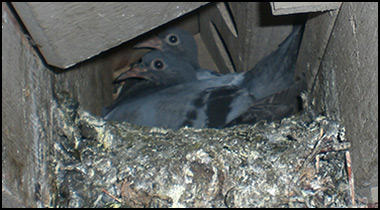
Bird Removal & Structural Repairs
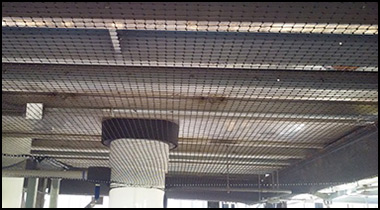
Exclusion Netting & Spike Installation
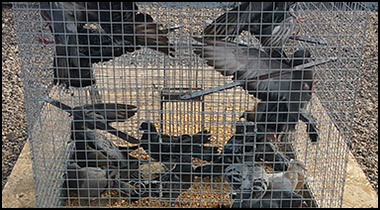
Bird Trapping, Aural Dispersion & More
Call 24/7 to discuss your bird problem.
Same-day or next-day appointments.
Thorough inspection of your property.
Written estimates for bird project.
All branches fully licensed and insured.
Structural bird exclusion netting.
Anti-roosting spikes and shock track.
Aurel dispersion and bird harassment.
Bird dropping cleanup and sanitation services.
Bird damage repair and building exclusion.
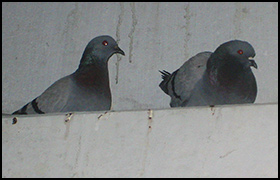
PROFESSIONAL BIRD CONTROL: Our professionals are fully licensed and insured in their state of operation, and ready to listen to your bird control concerns. As professional organizations, we are all available, by phone, 24 hours per day, 7 days per week. Our group maintain an active community of communication and attend seminars and training courses to ensure the best practices, use of the latest bird control materials, and ensure up-to-date training. We provide both residential and commercial services, including bird control in large structures such as parking garages, warehouses, and of course on architectural ledges, signage, and more. We commonly remove unwanted birds that have accidentally entered buildings and areas where they constitute a public health hazard, such as grocery stores. We handle several bird species, including feral pigeons, Starlings, House Sparrows, Woodpeckers, and we also provide Canada Goose control, while adhering to state, local, and federal laws, such as the Federal Migratory Bird Protection act.
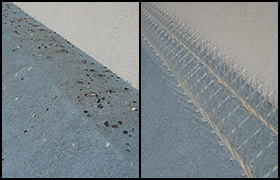
BIRD PROOFING: Urban pigeons are a common problem, as are Starlings and House Sparrows. Usually, the most effective means of bird control lies in making the roosing areas bird-proof. This means the installation of exclusion and deterrent products and devices that either discourage or completely prevent use of the area. Examples include shock track that trains the birds to avoid the area, netting that completely blocks off access to the area, perch wires, blockers, or slopes, and metal or plastic needle strips, such as seen in the photograph on the left, which prevent birds from roosting in an unwanted area. In some cases, building repairs are all that is necessary to prevent birds from entering an unwanted space such as a barn or the attic of a residential home. In the event of birds utilizing a large space such as a roof, boat pier, or other large area, we install strategic bird deterrent devices appropriate to the bird species and scenario, which discourage birds from using the space.
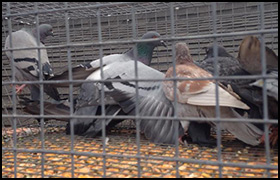
OTHER BIRD SERVICES: In some cases, exclusion and deterrents are not an option for pigeon control. In such cases, many of our technicians do offer bird trapping and removal to diminish populations in a given area. EPA registered products such as Ovocontrol and Avitrol can control pigeon populations as well. Other bird control services include the trapping of Canada Geese, and harassment of Canada Geese with dogs. Aural (sound) harassmant, including the use of pyrotechnics has shown effectiveness on several bird species, from seagulls to Muscovy Ducks to vultures. With special licensing, we can trap and remove woodpeckers that destroy your wooden house. We also specialize in bird dropping cleanup. Bird guano accumulation is not only unsanitary, but it can corrode building materials over time. We remove all droppings and nesting debris and disinfect, sanitize, fungicide, and deodorize the area using special cleaning products.
Popular Areas Serviced
CA Los Angeles Bird Control | CA San Diego Bird Control | CA San Francisco Bird Control | CO Denver Bird Control | FL Jacksonville Bird Control | FL Tampa Bird Control | GA Atlanta Bird Control | IL Chicago Bird Control | KS Kansas City Bird Control | MA Boston Bird Control | MD Baltimore Bird Control | MI Detroit Bird Control | MN Minneapolis Bird Control | MO St. Louis Bird Control | NC Charlotte Bird Control | NY New York City Bird Control | OH Cincinnati Bird Control | OH Cleveland Bird Control | PA Philadelphia Bird Control | TX Dallas Bird Control | TX Houston Bird Control | TX San Antonio Bird Control | WI Milwaukee Bird Control | Washington DC Bird Control | ...and over 130 other US cities
Review of common nuisance bird species
There are thousands of types of birds in the world. They run the gambit of size from larger than a man to smaller than a mouse. They vary in colors, habits, and diet. For centuries man has been fascinated with birds. The ability to fly, their ability to sing, and their ability to fascinate us with their antics usually make them a welcome sight. Bird watching is a popular and entertaining activity in many cultures , but when these creatures come too close for comfort, or become aggressive it is a problem. When they can pose a serious health hazard, and begin taking up residence in our homes, they become a real nuisance. The following is a list of the more common types of nuisance birds that can be found around homes and businesses. Your local agricultural extension agency can give you more information of birds in your local area.
European Starling (Sturnus Vulgaris)
The most common, nuisance bird species found in North America is the European Starling. Only the size of a Robin, these birds travels in large flocks which can consist of a hundred thousand birds. They are loud and obnoxious. Because so many Starlings will roost in a single area, they need to find large spacious buildings where they can stick together. Because Starlings travel in massive groups know as flocks, they pose a serious hazard to air travel. They are also responsible for millions in damages to farm operations each year .Their population in the U.S. is believed to be between 700 million to 1 billion birds. Each year Starlings can cause substantial loss of revenue in vineyards, orchards and berry farms. They belong to a family of birds usually referred to as “Black Birds”. These birds prefer to nest and eat the grain in barns and feed lots where their piles of droppings can pose a health hazard to both livestock and humans.
Rock Dove / Common Pigeon (Livia Colombia)
Pigeons are probably the best known and most recognized of all nuisance birds in the world. The Pigeon is a larger bird that loves to roost on rooftops and tall buildings. These birds are at home in urban and rural settings and are opportunistic feeders, eating anything they can find. This includes pet food, garden produce, garbage, or insects. Pigeons dropping feces in their roosting areas can spread disease to humans and livestock, as well as other wildlife. They can breed all year and have as many as 6 pairs of young each year. Living in close proximity with humans can result in both environmental and health hazards. Droppings can damage the finish on cars and other vehicles, as well as the paint job on buildings Pigeons living in barns and feed lots can contaminate the feed supply, causing a grave health hazard for both man and animal.
English sparrow (Passer Domesticus)
The English sparrow is not only the most prolific bird in North America, but the most abundant. Sparrows have been known to wipe out entire vineyards and decimate berry farms in a short period of time. This can cause severe financial problems for the growers. Sparrows are noisy and take over an area once established. They prefer travel in huge groups. Sparrows can breed throughout the year producing 4-7 offspring each breeding. They will often hide their nest in the very grapes and berry bushes they devour. They also nest in awkward places that can cause problems such as over doors, inside tailpipes or appliance vents, or in storage areas.
Western Gull (Larus Agentatus)
Found mostly on the US west coast, this type of Gull poses a serious health hazard to reservoirs and bodies of drinkable water. Because the most often feed at dumps, sewage holding and industrial areas, their droppings has been known to contain contaminates. They drop fecal matter while roosting at or near water reservoirs thereby contaminating the drinking water. This raises concern about a myriad of health hazards for man and animals. They have also been known to roost at airports commercial and private, as well as military bases, causing serious concerns about safe air travel.
House Finch
Commonly called a Linnet, the House Finch prefers to its home where it can live undisturbed by man or animal. These birds are not known to live in urban settings, but are attracted to homes in more rural settings, especially those near wooded areas. House Finch can become a pest when it decides to nest too close to a door or window. They can create quite a mess with droppings, and when the eggs hatch, there is weeks of obnoxious chirping from the young. Because they prefer to be secluded they generally stay out of the attic and chimney, preferring to nest in trees, bushes, or potted plants.
Bird Tip of the Month: How To Clean Goose Poop Outside
Bird droppings are an unsightly nuisance as well as having the potential to harm certain surfaces such as automotive paint. Just one goose can poop every twenty minutes, dropping up to 1½ pounds of poop daily. That’s a lot of goose poop! If it’s on your property, it’s up to you to clean it up because you certainly don’t want to step in it, or have the kids or dogs tracking it into the house. If you let it go, it will dry, which makes it even harder to clean up. Because it is highly acidic, when it solidifies on a surface, it can damage that surface. Here are some ways to clean up after geese.
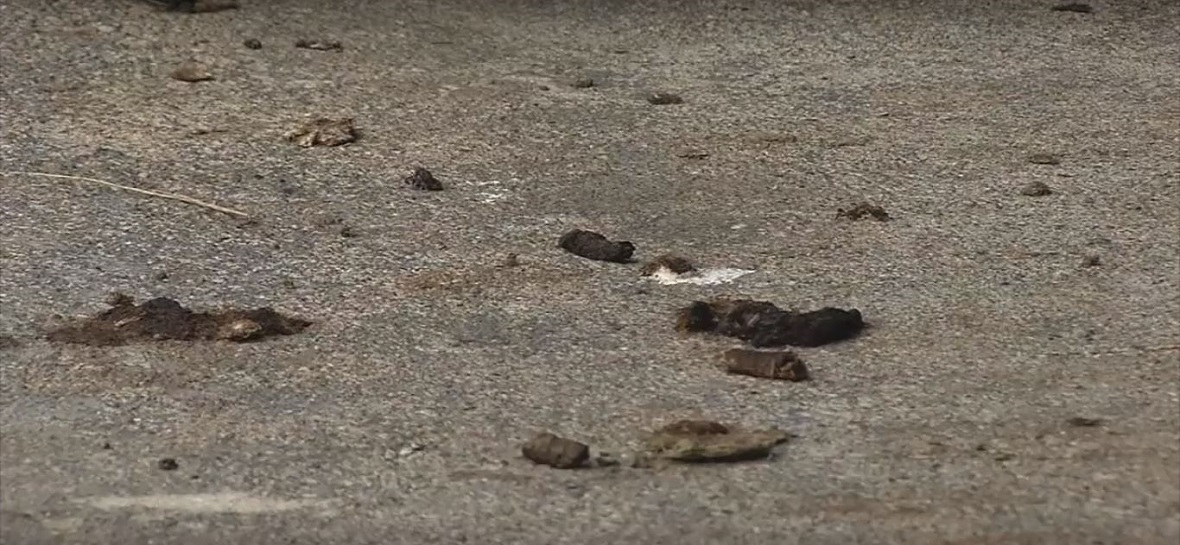
Use Water
If the poop is on your lawn or driveway and it’s fresh, just get out the garden hose and turn it on with enough force to wash the poop away. In the grass, it can more or less dissipate and seep into the dirt. Depending on what type of street or road you live on will depend on whether or not you can wash the poop from your driveway into the road. Be considerate of your neighbors!
Removing Dried Poop From Driveways
If the poop has dried on the concrete or asphalt driveway or sidewalk, you will have to work a little harder at getting it off. First of all, put on some disposable or washable gloves. Hose the spot to get it wet and soften the dried poop. Or you can lay a wet cloth over the spot to soften it. Then take a stiff scrubbing brush or broom and scrub the area to get the remainder off. Then clean the brush well.
Past Bird Control Advice Articles
- Removal of birds inside a building
- Bird Fogging - Chemical Bird Control
- Do artificial plastic owls keep away birds?
- How to get birds out of the attic
- Do mothballs help repel birds?
- How do I clean bird feces out of my attic
- How to keep birds off the roof
- Visual deterrents to keep away birds
- Methods for control of Muscovy Ducks
- How to Remove Bird in Chimney
- The Biology Of The Pigeon
- Can Crows Be Used To Clean Litter?
- How To Get Rid Of Birds Nesting In Eaves
- How To Keep Birds Away From A House
- How to use one-way exclusion funnels to remove birds without trapping them
- How much does probird removal cost?
- How to find and remove a dead bird
- How to get a bird nest out of a vent
- How to get birds out of a wall
- How to get rid of bird nests
- How to get rid of birds in trees
- Should you ever trap a bird in a cage?
- How to get rid of nuisance birds
- Is there free bird control from the city
- How to Clean Bird or Pigeon Droppings
- How To Clean Goose Poop Outside
- How To Get Rid Of Birds On Patio And Keep Them From Pooping There
- How To Get Rid Of Birds On Porch
- Should I relocate a bird
- How to kill a woodpecker
- How to keep woodpeckers away
- How to inspect a house for bird entry
- How to keep birds out of a barn
- How to keep birds out of a garden
- Methods for Control of House Sparrows
- Will insurance pay for bird damage?
- Woodpecker damage repair, prevention
- Canada Goose Control, Removal, Trapping
- Bird Abatement with Falcons
- How intelligent are crows?
- How To Get Rid Of Peacocks
- How To Scare Geese Away
- How To Get Rid Of Vultures
- Get Rid Of Woodpeckers On Cedar Siding
- How to Kill Birds Like Sparrows or Starlings
- Removal of birds from soffit or eaves
- What if a bird got inside my house
- Using sound for bird control
- Is bird feces dangerous to touch
- Methods for control of Starlings
- Seagull removal and control methods
- Should I ever poison a bird
- Bird Trapping - Can You Trap Pigeons
- What will keep down bird populations?
- What diseases do birds carry
- How to clean pigeon feces from concrete
- How To Keep Seagulls Off a Boat / Dock
- Why Is Woodpecker Pecking House?
- Homemade Woodpecker Repellent
- How To Get Rid Of Woodpeckers
- How to stop birds flying into windows


